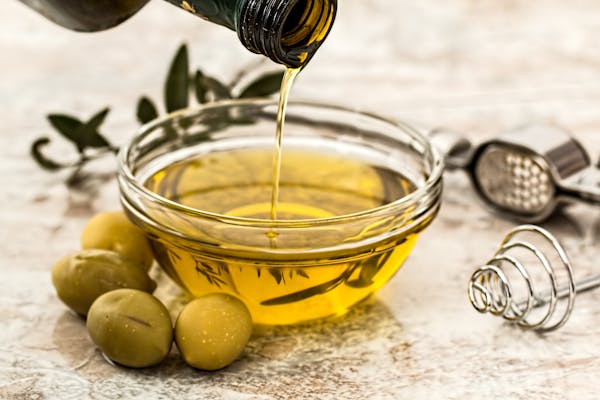From Olive to Canola: How Many Calories Are in One Tablespoon of Oil?
Alright, let’s talk about something super basic that most of us probably never think too much about — cooking oil.
We cook with it almost every day. Frying eggs? Pour some oil. Roasting veggies? Toss ’em in oil. Making salad dressing? Yup, oil again. But do you ever stop and wonder how many calories are actually in that little spoonful you’re pouring?
Let’s break it down — no jargon, no diet talk — just straight-up facts.
That One Tablespoon? It’s Sneaky
One tablespoon of oil might not look like much, but it’s got more calories than you’d think. Oil is pure fat. Like, literally 100% fat. And fat is high in calories — around 9 calories per gram.
So even a tablespoon, which is just 15ml or about the size of your thumb, can pack over 100 calories. Doesn’t matter what kind — olive, canola, coconut, sunflower — they’re all around the same ballpark.
A Quick Look at Common Oils
Let’s go one by one. Don’t worry, I’m not gonna throw science terms at you. Just plain facts.
🫒 Olive Oil – About 119 Calories
Probably the most popular one, right? Great for cooking, salads, dipping bread — tastes awesome. But yep, one tablespoon is around 119 calories. Still, it’s got a good rep because of healthy fats.
🌽 Canola Oil – About 124 Calories
This one’s everywhere. It’s cheap, neutral in flavor, and a favorite in everyday cooking. Slightly more than olive oil, with around 124 calories per tablespoon.
🥥 Coconut Oil – About 117 Calories
People either love it or hate it. Coconut oil smells great, especially in baked stuff. But don’t let the “natural” vibe fool you — one tablespoon has 117 calories, and it’s mostly saturated fat. Not bad in moderation, but not something to pour freely either.
🌻 Sunflower Oil – About 120 Calories
You’ll find this in a lot of packaged snacks. It’s light and doesn’t mess with flavor much. About 120 calories in a tablespoon, just like the others.
🥑 Avocado Oil – About 124 Calories
This one’s a bit trendy. People like it because it’s good for high-heat cooking and has a nice buttery feel. But it still adds up. One tablespoon? 124 calories.
🫘 Peanut Oil – About 119 Calories
Used a lot in Asian dishes and deep frying. It has a mild, nutty taste. And again, one tablespoon = 119 calories.
🌾 Vegetable Oil – About 120 Calories
This is the mix of oils you find in big plastic jugs at the store. Usually soybean or corn oil. It’s cheap and everywhere. Calories? About 120 per tablespoon.
What About Butter?
Good ol’ butter. Not oil, but people use it the same way.
Butter has a bit fewer calories — around 102 per tablespoon — but it’s also got a lot of saturated fat. And it burns quicker when cooking, so you might use more. Tradeoffs, right?
And Those “Zero Calorie” Cooking Sprays?
You’ve seen the cans. “0 calories!” But here’s the trick: they’re allowed to say that if one spray is under 5 calories. Most of us? We spray for 3 seconds, not a split second. So you might still be adding 10–20 calories, easy. Not a huge deal, but definitely not truly zero.
Should We Be Worried?
Nah, no need to panic. Oils aren’t bad. In fact, a bit of oil is good for you. Your body needs fat. It helps you absorb vitamins, it keeps you full, and honestly? It makes food taste better.
But because oil is so calorie-dense, it’s easy to overdo it without even noticing. That’s where people get tripped up. You’re not doing anything wrong by using it — just good to be aware of how much you’re really adding.
Tips to Keep Calories in Check (Without Ruining Your Food)
Nobody wants dry food or bland salads. But if you’re trying to use a bit less oil, here are a few chill tricks:
- Use a spoon. Seriously. Don’t free-pour from the bottle. One second = who knows how many calories.
- Try a brush. Use a little brush to spread oil on a pan or over veggies. You end up using way less.
- Roast with foil or parchment paper. Food still cooks fine, and cleanup’s easier too.
- Skip it in salad dressings. Try mixing lemon juice, vinegar, mustard, or yogurt instead.
- Use flavorful oils sparingly. Like sesame or garlic-infused — a little goes a long way.
So, What’s the Takeaway?
Oils taste great, and they’re part of a normal, balanced way to eat. But they’re also high in calories — more than most people think.
Just one tablespoon of any cooking oil? It’s usually over 100 calories. Doesn’t matter if it’s olive, coconut, or peanut. So if you’re watching your intake or just curious, it’s worth measuring once in a while.
Don’t stress, don’t overthink it. Just be aware. That’s half the battle.
If you’re ever curious about what’s going into your food, start with the small stuff. That spoon of oil might not seem like much, but it adds up — in flavor, and in calories.
Keep it simple. Cook what you love. Just maybe don’t pour with a heavy hand.



